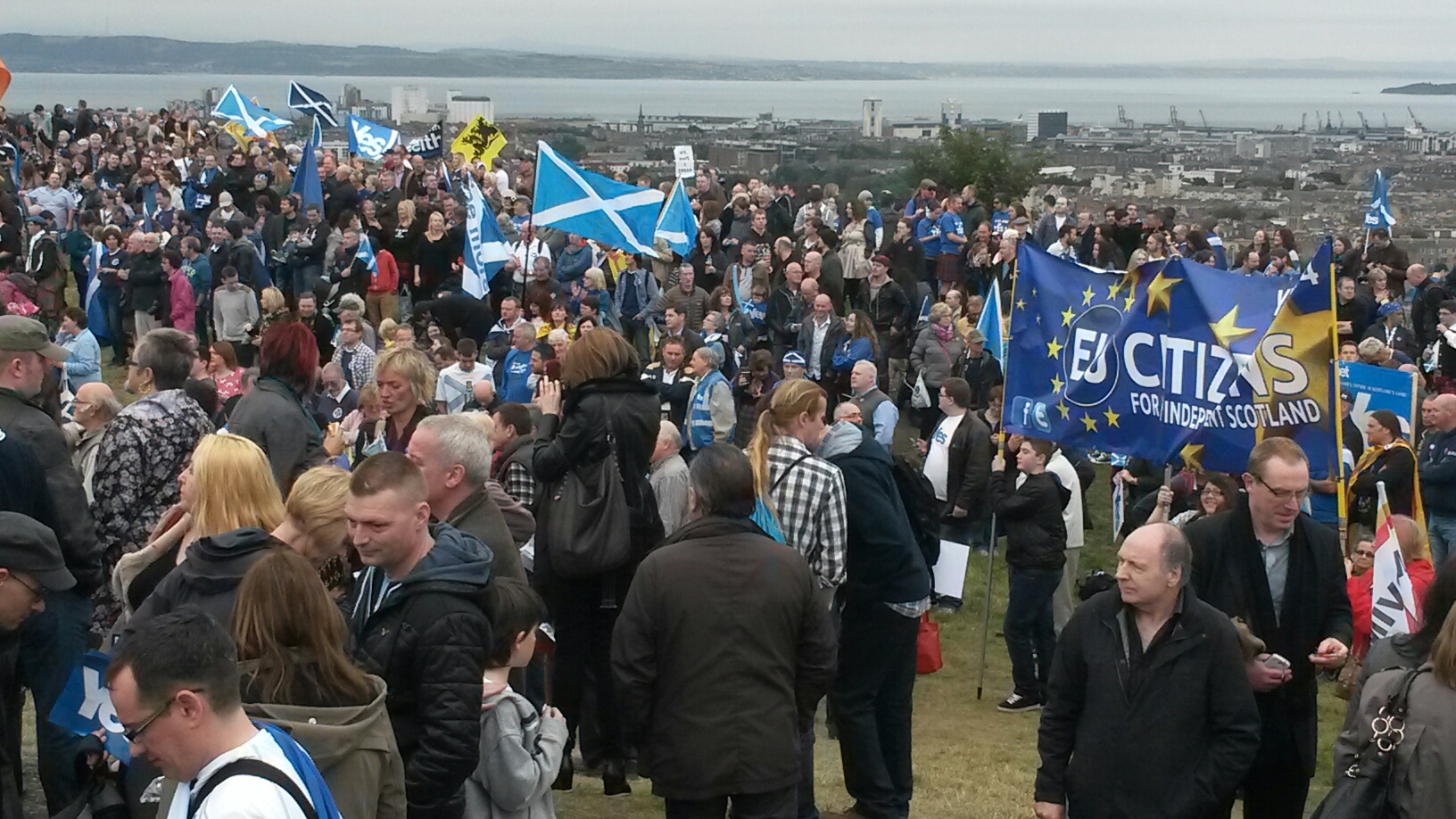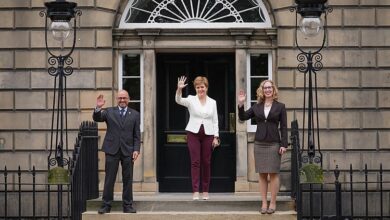Tens of thousands march for a Yes vote in 2014

Over 20,000 supporters of Scottish independence marched through Edinburgh on 21st September. This significant mobilisation was double the attendance at the same Yes Scotland demonstration in September 2012. The large turnout, a year before the independence referendum on the 18th September 2014, again shows that although support for independence still polls as a minority, a growing radicalised layer of workers and young people see a YES vote as an escape route from cuts and austerity.
The Scottish National Party (SNP) and the official Yes Scotland groups clearly mobilised a large proportion of their activists and supporters, making up around two-thirds of the march. However, the demonstration was also a broad cross-section of Scottish society, with a significant mobilisation of workers, trade unionists and young people.
The majority of trade union leaders have so far taken a back seat and failed to engage on the question of the referendum, let alone put forward a distinct pro working class campaign. Thus far the trade unions have not taken a position either for or against independence. This was visible on Saturday by the lack of trade union banners on the demonstration.
However there was a turnout in terms of banners from CWU activists from the Scotland No2 branch which has come out in favour of a Yes vote and have helped set-up the Trade Unionists for Independence campaign. In the run up to the demonstration the SNP leadership pledged to reverse the planned privatisation of Royal Mail in an independent Scotland.
Despite the lack of an organsied presence from the trade unions in reality a large number of trade union activists attended, which shows a potential audience for a campaign that would put forward pro working class demands. Socialist Party Scotland members in the trade unions are calling for a debate and a democratic discussion to allow members to draw up a policy that puts the interests of the working class centre stage in the referendum debate.
Rally
The march finished with a rally on Calton Hill. Some of the rally speakers did reflect the widespread support for an alternative to austerity ridden capitalism. Margo McDonald an Independent MSP called for public ownership of the railways. Ex Labour left MSP Dennis Canavan got an enthusiastic response for railing against benefit cuts and the Bedroom Tax.
Nicola Sturgeon, deputy leader of the SNP was much less radical, but still put forward social democratic rhetoric avoiding reference to the SNP’s attempts to win the support of big business for their independence project. SNP leader Alec Salmond gave a list of “progressive” policies “an independent government under my leadership” would implement, playing up the renationalisation of Royal Mail and making reference to abolishing the Bedroom Tax.
It wasn’t lost on many of those demonstrating that the present Scottish Government under his leadership have failed to use devolved powers to prevent the threat of Bedroom Tax evictions and lift the cost of the benefit cut from the shoulders of working class people by funding the £50 million loss. Socialist Party Scotland petitioned at the demonstration on this issue and got a warm response.
The rally demonstrated two themes. One the increasing pressure of working class anger against austerity that both sides in the referendum debate will be forced to engage with. This has expressed itself recently with the SNP and Labour trying to outflank each other on the left on issues like the Bedroom Tax and Royal Mail. This meant the rally promoted ideas that an independent Scotland would have no Bedroom Tax, a protected NHS and no Trident alongside vaguer promises about a more equal and fairer society.
The other theme was the false impression that a “social democratic” consensus exists in Scotland compared to elsewhere in the UK and that a YES vote will automatically guarantee a fairer kind of society. This ignores the reality that “Scottish” bosses and big business are just as vicious in attacking and exploiting workers as any other evidenced by the prevalence of underemployment and zero hour contracts.
Some of the radical ideas and content of the rally would have chimed with the consciousness of workers and young people searching for an alternative, although the most politicised of these are still asking questions about how a “more equal society” would be concretely achieved.
None of the speakers highlighted the record of the SNP in government in passing on the Con-Dems cuts and promising to cut corporation tax after independence.
The left participants in the official YES campaign such as the Greens and the remnants of the Scottish Socialist Party (SSP) reinforce illusions that an independent Scotland would resolve the issues of cuts and austerity.
SSP convenor Colin Fox did raise the idea of an “independent socialist Scotland” but gave no idea about how this was to be achieved beyond calling for a YES vote. Significantly, and showing how far the SSP have shifted to the ground occupied by the SNP, they now pose the type of socialism they are fighting for post-independence as “the chance to establish a left of centre social democratic state”. (SSP pamphlet) In other words a fairer capitalism.
Socialist Party Scotland was alone in putting forward the demand for public ownership and democratic workers control of the major sectors of the Scottish economy including oil and gas and the banking system. Our material explained that savage austerity is the dominant policy of governments worldwide and that there is no possibility of a return to a capitalism based on growth and rising living standards – the basis for the Nordic Model- that sections of the pro-independence left in Scotland argue could be possibility after a YES vote.
This demonstration and the debate over the next year in the run-up to the referendum has and will offer socialists the chance to put the case for a socialism and the building of a new working class party that will stand up for the 99%, a demand that received strong support among working class people on the march,.


